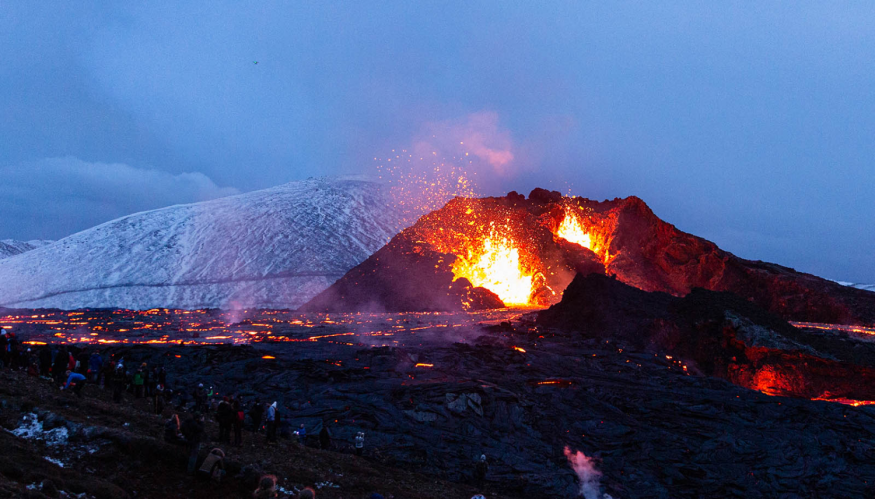The tuya volcano in the glacial region in Iceland, the Fagradalsfjall volcano, revealed new information about the behavior of volcanoes.
Matthew Jackson from the University of California in Santa Barbara and his team collected magma samples from the volcano and uncovered a process far more dynamic than anyone assumed in the two centuries of studying volcanoes.
Jackson said while figuring out how the volcanoes work, they encountered a big surprise. The volcano located in the lowlands of the southwest region of Iceland exploded and spat magma in March 2021. According to Jackson, everyone on the Reykjanes Peninsula was ready for the eruption.
The earthquake was intense; there were 50,000 or more aftershocks with magnitude 4 intensity and more, and it lasted for weeks.
The Geologists' Mission
Scientists flocked to the area to see the newest section of the planet's crust. They were able to come close to getting some samples of the lava that continuously flows.
Sæmundur Halldórsson led the geologists from the University of Iceland. They were trying to figure out the depth of the mantle where the magma came from, the distance beneath the surface it was stored before the explosion and the events in the reservoir before and during the explosion.
The mission was challenging due to the unpredictability of eruptions, extreme conditions, and inaccessibility of active sites.
They assumed that the magma chamber fills up slowly over time and becomes well-mixed as it drains throughout the eruption. They added that those studying volcanic eruptions do not expect to see important changes in the chemical components of the magma.
Based on their study, Iceland has more than a thousand rates of change because of chemical indicators. According to Jackson, the Fagradalsfjall eruption illustrates more compositional variables than the Kilauea explosion in the past decades.
The total range of chemical components that were sampled over the first-month span the entire range that has ever erupted in the southwest region for the last 10 millennium.
The study was published in Nature.
The Chemical Changes in Magma Component
According to the geologist, the variability may result from subsequent batches of magma flows going to the chamber deeper into the mantle.
Jackson set an example of a "lava lamp." The hot lightbulb at the bottom heats the blob and when the blob rises, it cools and then shrinks.
As the humidity causes the regions of the mantle to rise and plume, it moves and forms buoyantly upward toward the surface.
The molten rock from the plumes accumulates in the chambers and then crystallizes, then the gasses escape through the crust, and the pressure builds until the magma finds a path to escape.
According to the study, the first few weeks, what erupted was expected to "deplete" the magma that accumulated in the reservoir, located 10 miles below the surface.
But during April, some proof showed that the chamber was being recharged deeper.

The enriched type of magma melts in a unique component from a strange area of an upwelling mantle beneath Iceland.
The new magma had less modified chemical components but with higher magnesium on it and a more significant proportion of CO2 gas, indicating fewer gasses from this magma had escaped.
By May, the magma that had dominated the flow was enriched. The extreme rapid changes in the composition of the magma at a plume-fed hotspot "have never before been observed in real-time," based on their observations.
The Scientist's Conclusion
The changes in the composition may not be so rare, according to Jackson. Perhaps, it's just an opportunity to sample an eruption at such an early stage.
Jackson stated that their team doesn't often record the early stages of eruptions due to the lava flows. The project just allowed them to visualize for the first time a unique phenomenon that was thought to be possible but was never witnessed personally.
For the researchers, the result serves as a "key constraint" in how models of volcanoes around the globe are built. However, it's not clear what the phenomenon of other volcanoes is or the role it plays during an eruption. For Jackson, it is an alert that the Earth's secret has to be yielded.
RELATED ARTICLE : Volcanic Eruption in Iceland on Its 6th Month Tomorrow, the Longest in More Than Half a Century
Check out more news and information on Volcanoes in Science Times.
© 2025 ScienceTimes.com All rights reserved. Do not reproduce without permission. The window to the world of Science Times.












